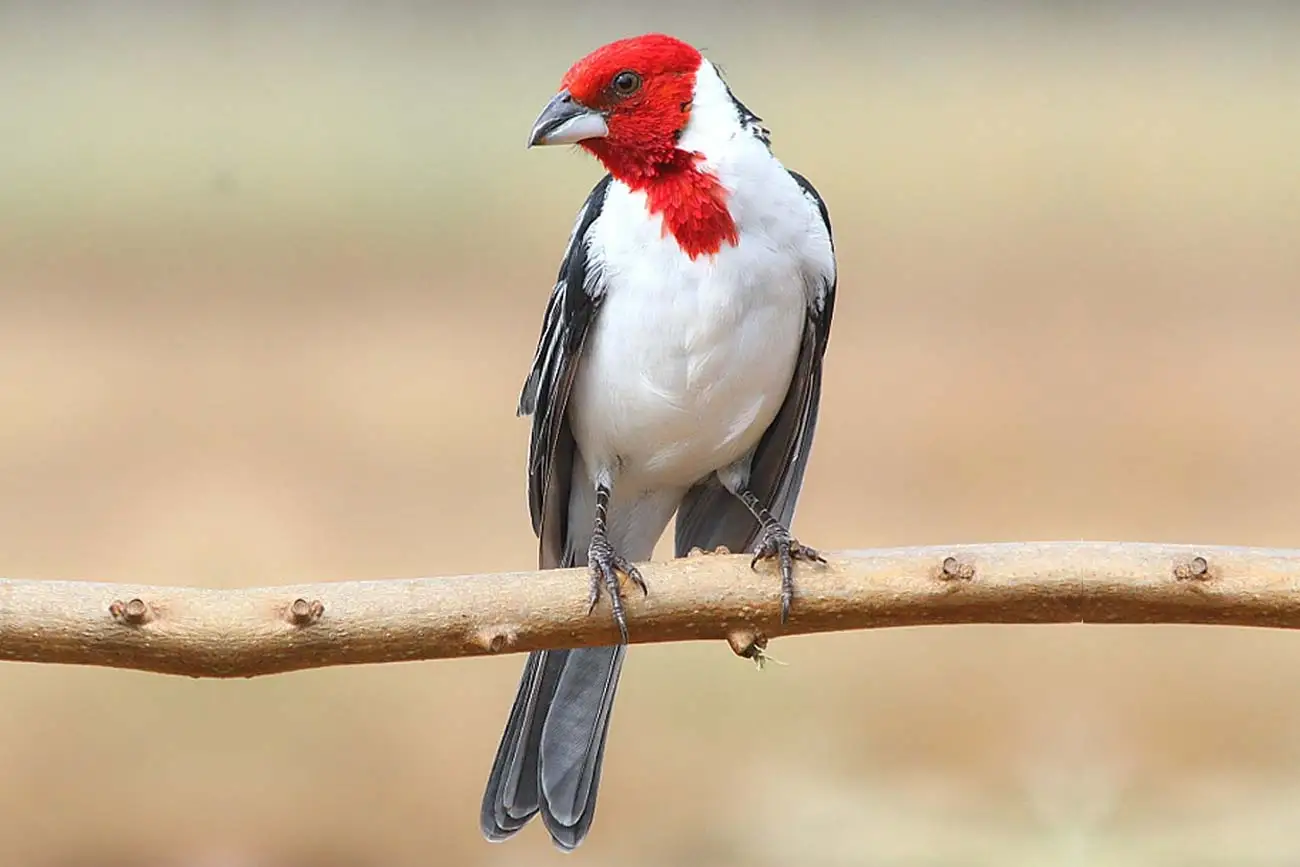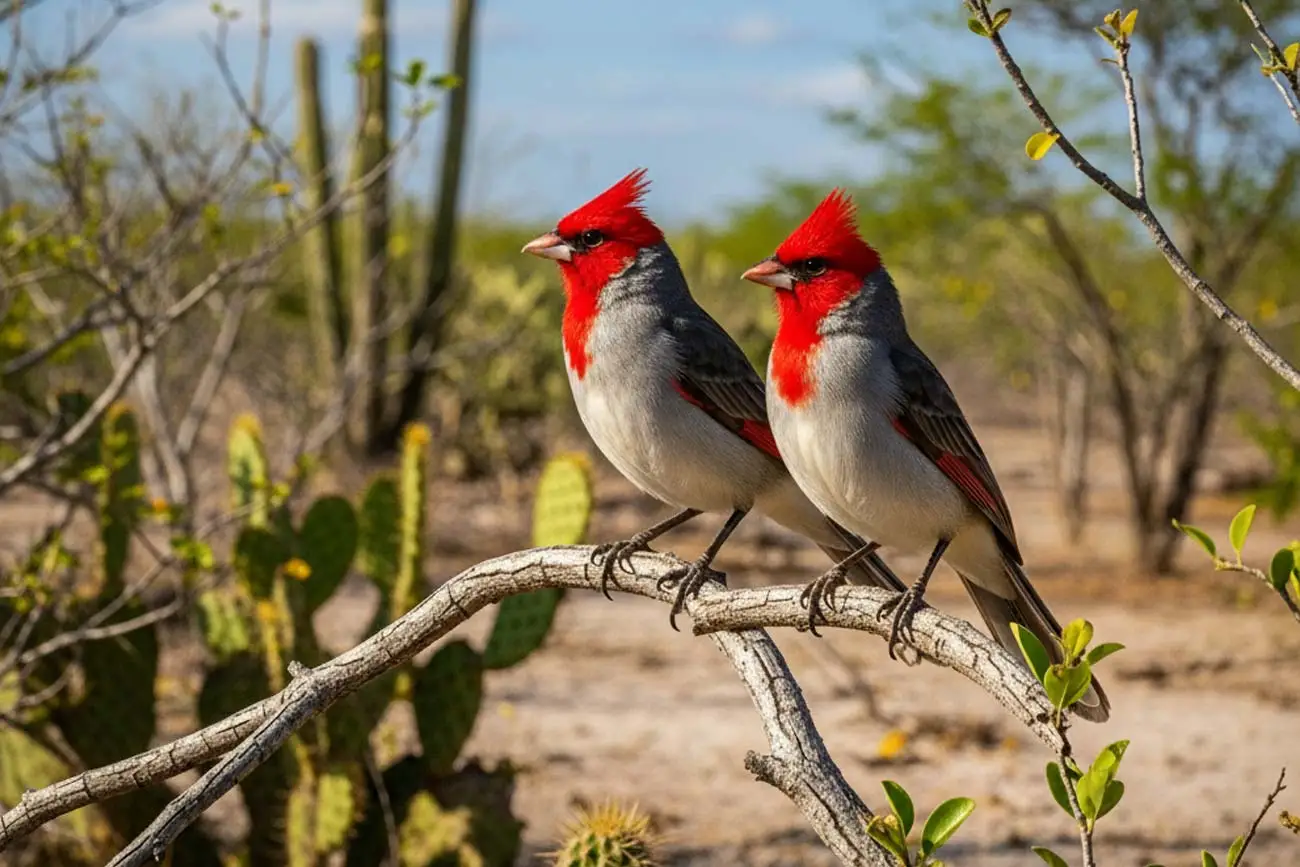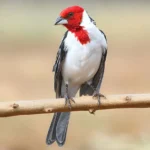
Red-headed Bird: The Strong Bird of the Brazilian Northeast
Among the vibrant sounds of the caatinga and the unique landscapes of the northeastern sertão, a bird with intense plumage catches the attention of any nature lover: the Red-headed Bird. Its striking color and physical strength have made it one of the most talked-about birds in the region, not only for its beauty but also for the cultural symbolism it carries.
Tópicos do artigo
Have you heard of this fascinating bird? If the answer is no, get ready to dive into an engaging journey about its history, curiosities, and the challenges it faces. Discover why the Red-headed Bird is considered one of the strongest and most emblematic birds of the northeast!
What is the Red-headed Bird?
The Red-headed Bird, scientifically known as Paroaria dominicana, is a passerine bird belonging to the Thraupidae family. Popularly, it is also called the Northeastern Cardinal, Field Rooster and Ribbon-head. This bird doesn’t go unnoticed: its gray and white plumage contrasts with the bright red that covers its entire head and neck, creating an unmistakable appearance.
Medium-sized, the Red-headed Bird measures about 17 cm and weighs, on average, 25 to 30 grams. Despite its modest size, it is recognized for its resistance and agility, characteristics that have earned it the fame of a strong bird.
Another fascinating point is that it is endemic to Brazil, found especially in the northeast, in areas of caatinga, cerrado, and forest edges. This means that its presence is a true treasure of national biodiversity.
Surprising curiosities about this bird
Did you know that the Red-headed Bird carries a series of curiosities that make its history even more special? Here are some of them:
- Melodious song: Despite its imposing appearance, its song is soft and pleasant, which has made it a bird much admired by breeders and observers.
- Regional symbol: For many northeasterners, the Red-headed Bird represents resistance and courage, as it survives in arid and challenging environments.
- Difference between males and females: Both have the characteristic red head, but males usually have more intense colors and slightly more vibrant plumage.
- Varied diet: The diet consists of seeds, fruits, and small insects, showing the species’ versatility.
- Longevity: In suitable environments, it can live more than 8 years, especially when kept in legalized captivity with adequate care.
These particularities make the Red-headed Bird not only a beautiful bird but also a fascinating being in behavior and adaptation.
Why is it so special?
The Red-headed Bird is not just another beautiful bird. It carries a very strong cultural and environmental meaning. For northeastern communities, its presence is linked to regional pride, representing the vitality of the caatinga.
Moreover, it is considered an environmental indicator, meaning that its healthy presence in a certain area can reflect the ecosystem’s balance. When populations of this bird decrease, it’s a sign that something is wrong in the environment.
Another reason that makes it special is its natural resistance. Even in times of intense drought, it finds ways to survive and reproduce, showing an incredible example of adaptation.

Conservation challenges and how to help
Unfortunately, like many Brazilian birds, the Red-headed Bird faces serious challenges. The main one is illegal capture for the wild bird trade. Its pleasant song and vibrant coloration attract clandestine breeders, which contributes to the decrease in population in nature.
Another concerning factor is habitat destruction, as caatinga areas have been devastated to make way for agricultural and livestock activities. The loss of vegetation reduces nesting sites and food supply.
But there is hope! There are ways to help:
- Support conservation projects: Several NGOs and institutions work to protect wild birds in Brazil.
- Don’t buy illegal birds: The best way to combat trafficking is not to encourage the practice.
- Educate others: Sharing knowledge is a powerful way to generate awareness.
- Value ecotourism: Observing birds in their natural habitat is an enriching and sustainable experience.
When we understand the role of the Red-headed Bird in nature’s balance, we realize that taking care of it is also taking care of the future of Brazilian biodiversity.
Tips for those who love birds and exotic pets
If you already have experience with pets or are thinking of delving deeper into the world of birds, it is essential to adopt responsible practices. Here are some recommendations:
- Choose legality: If you wish to have birds at home, make sure to buy them only from breeders authorized by IBAMA.
- Provide environmental enrichment: Like any pet, birds need stimuli. Toys, perches, and spaces to fly are essential.
- Balanced diet: Never restrict the diet to seeds only. Fruits, vegetables, and specific feed make all the difference.
- Consider well-being: The Red-headed Bird is more than beauty. It needs space, veterinary care, and daily attention.
- Explore birdwatching: Even if you don’t want to keep birds, you can delight in observing the Red-headed Bird in its natural habitat.
These practices not only improve the quality of life of birds but also strengthen the relationship of respect between humans and nature.
In summary
The Red-headed Bird is much more than a bird with a striking appearance. It represents the strength of the Brazilian northeast, the resistance of the caatinga, and the beauty of national biodiversity. Every detail – from the soft song to the flaming head – is an invitation to admire and protect this incredible species.
By learning more about it, we realize that true strength is not only in survival under adverse conditions but also in the ability to enchant and inspire generations.
And you? Have you spotted a Red-headed Bird up close? Share your experience in the comments, send this article to that friend who loves animals, or explore other content here at Adore Pets. Let’s spread knowledge and love for nature together!



